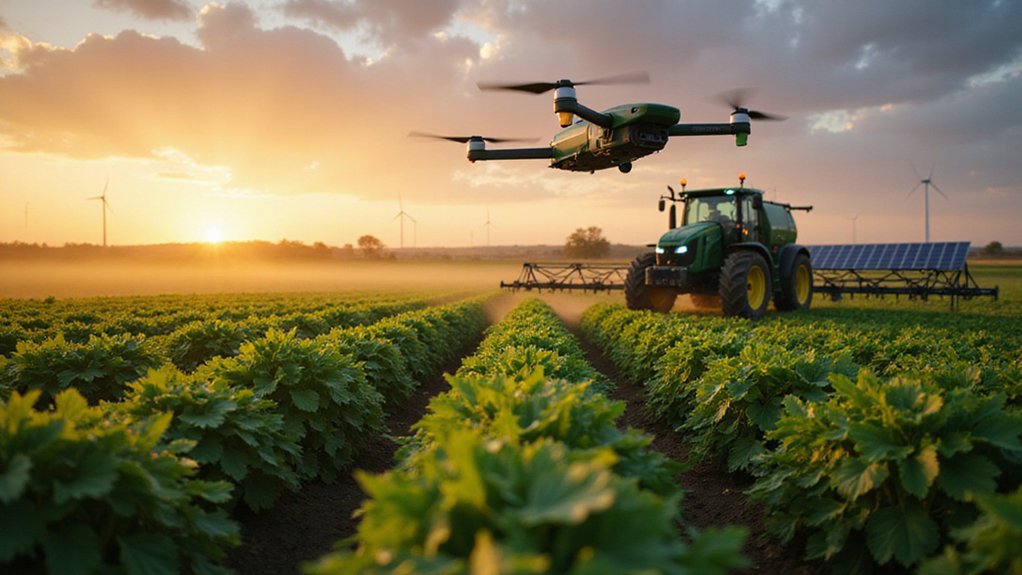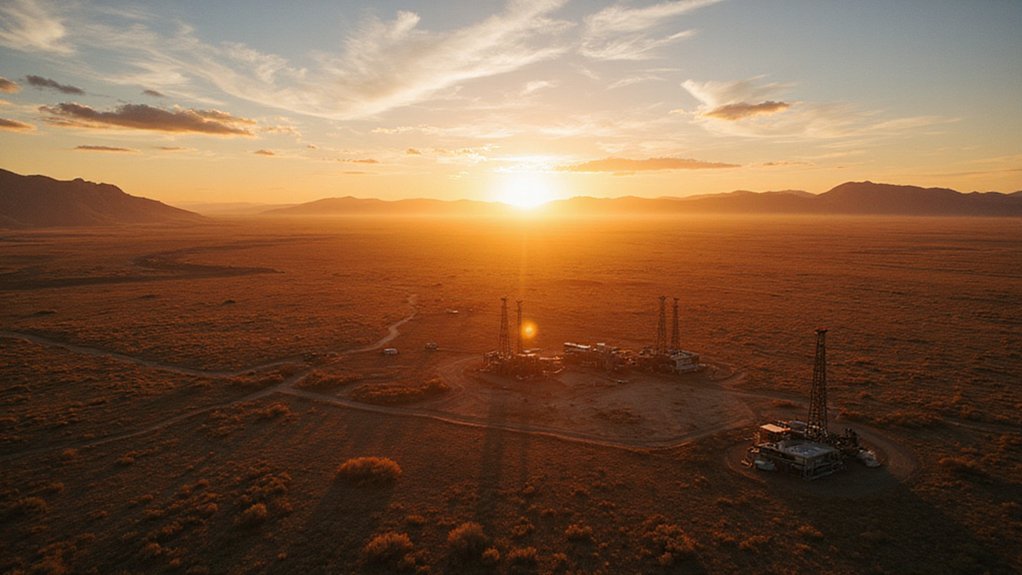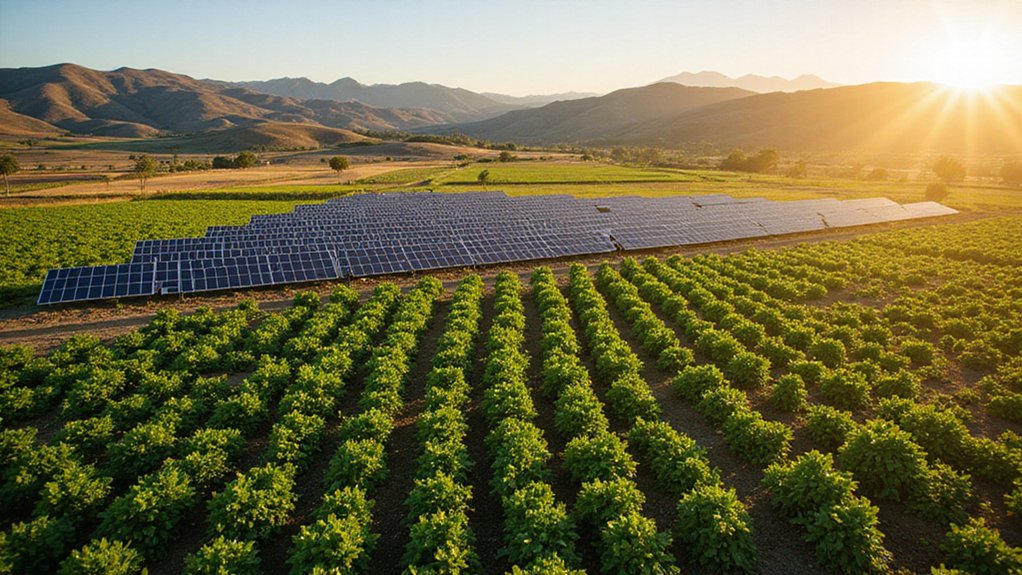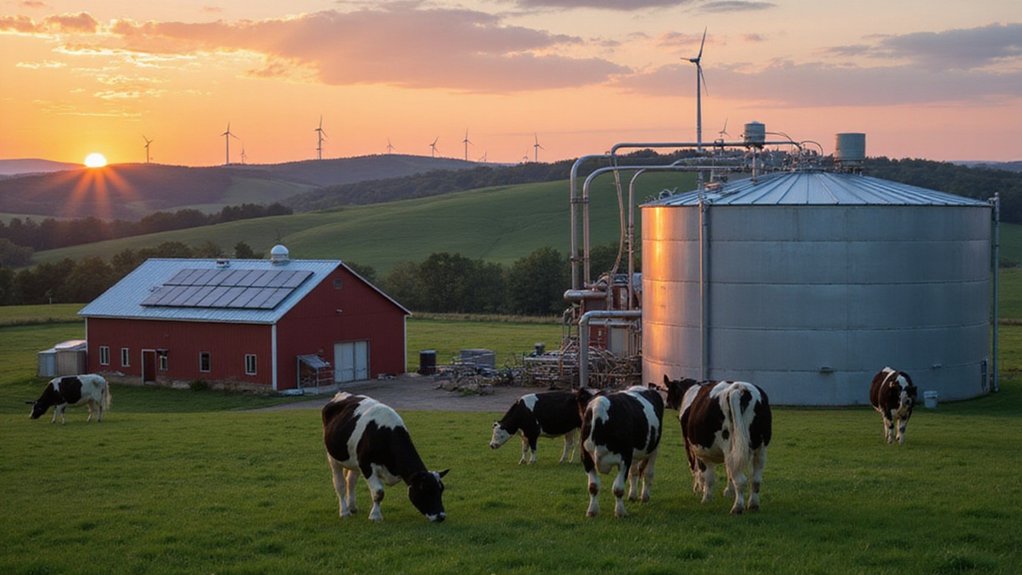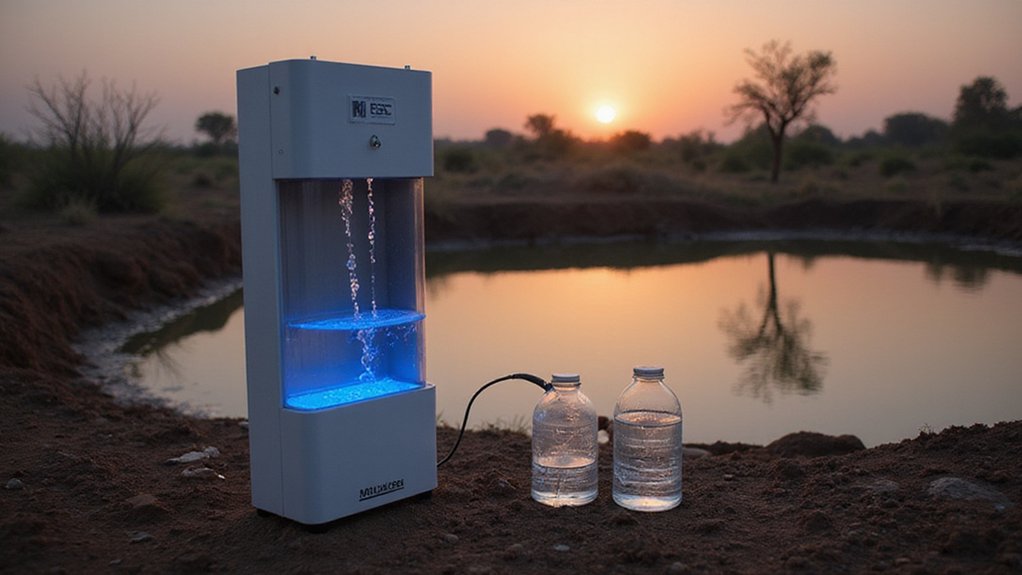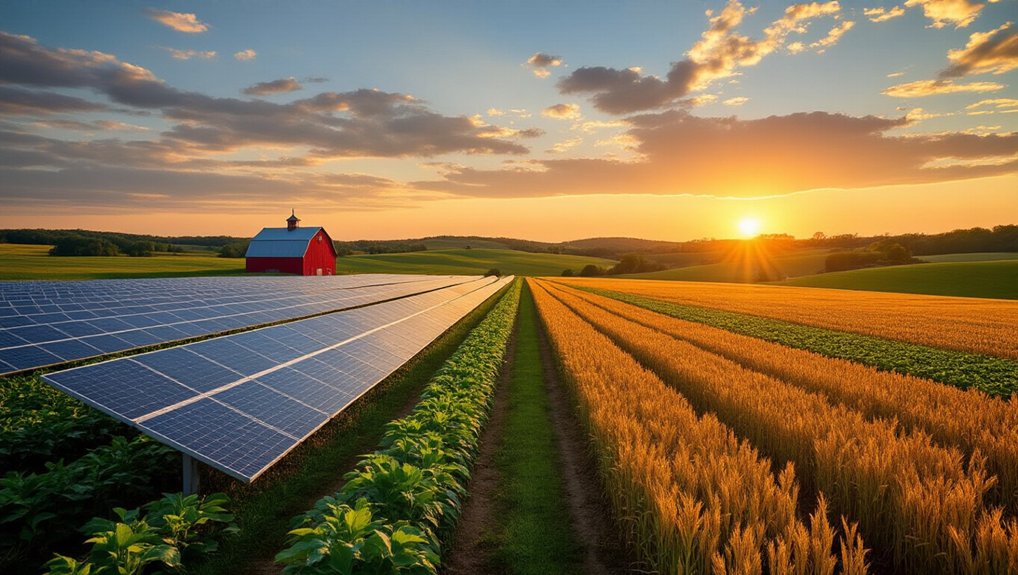Farmers around the world are embracing a transformation in agriculture as artificial intelligence (AI) and clean energy technologies alter how crops are grown. The global AI in agriculture market is now valued at $4.7 billion and is growing at an impressive rate of 26.3% each year. This technology shift comes at a critical time as farms face labor shortages, rising costs, and the need to produce more food on less land.
AI-powered precision farming is making a huge difference in how crops are managed. Farmers can now reduce pesticide use by up to 97% through targeted treatments based on data collected from soil sensors and satellite images. These systems analyze field conditions in real time, telling farmers exactly where and when to apply water, fertilizer, and other resources. The result is higher crop yields with less waste.
Precision AI farming slashes pesticide use while maximizing yields through real-time field data analysis.
Robots and autonomous vehicles are changing farm operations too. Self-driving tractors, drones, and harvesting robots work longer hours than human workers and perform tasks with incredible precision. They’re especially valuable in areas with aging farming populations where finding seasonal workers is difficult. These machines don’t get tired and can operate day and night.
Smart monitoring systems are giving farmers unprecedented insight into their crops. AI analyzes images from drones and satellites to spot plant diseases early. The technology has proven particularly effective in field farming, which currently holds 61.5% market share in 2024. Sensors in the soil track moisture and nutrient levels. Computer vision applications like TMS TreeScout map blooms and monitor livestock health automatically.
The impact extends beyond the field. AI improves supply chain management by predicting demand, optimizing transport routes, and reducing food waste. Weather prediction models help farmers prepare for storms and droughts. Quality control systems guarantee only the best produce reaches consumers.
As clean energy sources like solar power become more integrated with these technologies, farms aren’t just becoming smarter—they’re becoming more sustainable. Some agricultural operations are incorporating geothermal energy for its minimal land use compared to other renewables while providing reliable power for AI systems. The combination of AI and renewable energy is creating a farm transformation that promises to secure agriculture’s future against growing global challenges. With machine learning technologies accounting for approximately 50% of AI agricultural applications in 2024, predictive analytics are revolutionizing weather forecasting and planting schedules.
References
- https://scoop.market.us/ai-in-agriculture-statistics/
- https://www.gminsights.com/industry-analysis/ai-in-agriculture-market
- https://www.oldnational.com/resources/insights/disrupting-agriculture-how-ai-and-data-are-powering-the-2025-agtech-revolution/
- https://www.precisionfarmingdealer.com/articles/6440-how-ai-is-transforming-modern-agriculture-in-2025
- https://thrakika.gr/post/ai-in-agriculture-expected-to-grow-exponentially-by-2025-report-states-V7
